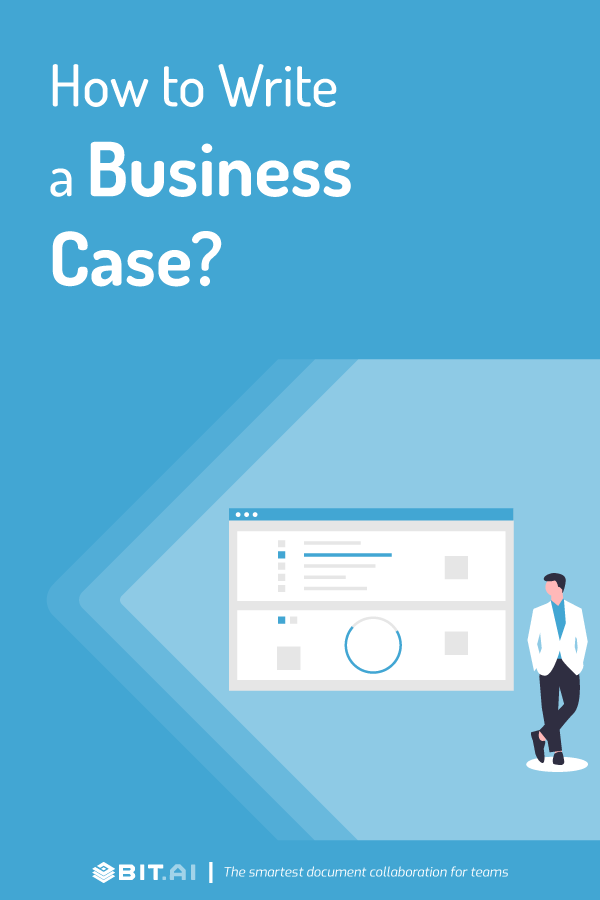Proposing a project, a new software expense, or a new course of action for your business to your manager, upper management, CEO, investors or other stakeholders can be daunting.
Just like pitching your early-stage startup to high profile investors, asking for their money and help, you have to describe the problem, offer your solution(s), outline the path you are going to take, and reassure your audience why your team is capable of making this change happen.
When you are asking for funding, time and other company resources to be spent on something new, a lot of people are going to ask questions. You cannot have casual conversations about building a new product or buying new technology and expect your manager to come through.
Smart project managers know that in order to convince important people, of something that you want help with, a formal document is key. The document should describe precisely what you propose and why upper management or people you are asking for approval should care.
One such document is called a business case. By creating a professional business case, that outlines a business problem and proposed solutions, project managers are in a better position to pitch their upcoming projects and improve their chances of getting approvals. But let’s not get ahead of ourselves just yet. Let’s first quickly understand what is a business case document and why it’s important. Read on…
What is a Business Case?
A business case document can be defined as a critical document that you present to upper management, CEO, or other key stakeholders to get your project approved or receive funding for it. It’s essentially a document that sells your new idea to stakeholders or upper management. The business case is then assessed by upper management, sponsors, or other stakeholders to help them judge whether or not they want to support the project and allocate resources to it.

Every business case document is unique in its content but the basic format remains the same. A business case must contain all the key information regarding the project for it to get approved or funded. While some present business cases as a Word document or PDF, others might make a video or a PowerPoint presentation to get their point across. Regardless of what you decide to make, every business case must contain the following key points:
- A problem you’re trying to solve or market or opportunity you want to take advantage of
- A benefit of the change to the organization
- A team involved in the project
- A summary of deliverables
- An estimated budget required for adequate execution
- Potential risks and limitations of the project
- A timeline of the project and key milestones.
Only when a business case has all this key information explained in a well-organized way, it has a chance of getting reviewed seriously. Your audience is bound to have many questions in mind while you approach them for help. It’s thus important to be prepared with a solid case and have answers to every possible question.
Read more: How To Make A Full Proof Business Plan?
Why it’s Important to Write a Business Case?
A business case is designed to convince key decision-makers of the benefits of a particular course of action, a new strategy, or a new product innovation. However, to convince decision-makers, you need to have a solid case in hand. If you are asking your organization for resources (money, labor, office space, etc.) they’d want to make sure that you know what you are doing. A business case is important to your project and here’s why:
1. Kickstarts your project
You cannot begin working on your next big thing without the approval of those above you in the organizational decision-making chain. Only with their consent and help can you organize and execute projects successfully.
Only when you have convinced stakeholders of the advantages of whatever you’re pitching, why you have the team to execute it, and how you are going to make it happen, can you get started on your project!
2. Gives you direction
While preparing your business case, you have already mapped out all key details about your project. Key information like why you are pitching the project, how will it benefit the overall business mission of the company, what resources do you need, how much money will it require, what will the deadline be, how will you implement the project and so on will already be thought through.
Once you have all this information thought-out, debated, and written down in a document, it will make the actual execution of the project much easier.
Since you already have a plan in place, you are in a better position to deal with upcoming challenges or threats and have a contingency plan in place.
3. Gets everyone involved
The business case would be the first point of contact between you and the decision-maker(s) in your organization.
A well-thought-out business case not only helps convince stakeholders of the merits of implementing the project but also brings them confidence that you are the right person to lead this project and see it to completion. This will, in turn, start a healthy long-term relationship between you and the stakeholders and get everyone on board with the initiative.
Read more: How To Write A Business Proposal?
Follow these Steps for Writing a Successful Business Case
Before you begin writing your business case, you should collect all the sources of data that will be required to support the business case. These sources may include customer data, competitive analysis, demographic data, historical data, financial info from within the company, case studies from similar projects, and more. Once you have collected everything you need, you can start creating your business case.
Pro Tip: Use a documentation tool like Bit to bring your team inside the document and start creating a business case collaboratively.
A typical business case document contains the following key elements:
1. Write executive summary
The executive summary provides a broad overview of the business case document. It briefly explains the entire document- what the proposed project is all about, what business problem does it solve, the resources needed to execute the project, how the final project would look like, along with the estimated return on investment of the entire project.
 Since business case documents tend to be long-form, some stakeholders won’t have the time or energy to read the entire thing and will only thoroughly go through your executive summary. Thus, it’s crucial to include all key information that will easily help the reader make the decision in your favor.
Since business case documents tend to be long-form, some stakeholders won’t have the time or energy to read the entire thing and will only thoroughly go through your executive summary. Thus, it’s crucial to include all key information that will easily help the reader make the decision in your favor.
2. Point out the statement of the problem
The problem statement is the next section of the business case. As the name suggests, this section goes through the business problem your intended project is supposed to solve. To make your case, you can point out inefficiencies in the current system, underwhelming customer response to a current product, market opportunities to be exploited, issues that need to be addressed, and so on. Basically, the problem statement addresses the reason behind the business case and why now is the right time to execute the proposed project.
3. Describe any alternate solutions
Once you have articulated the business problem, the next step is to justify your proposed solution. How do you know that the project you are proposing is the best way to solve the business problem you mentioned in the above step?
This section, therefore, explores all possible solutions to the above-mentioned problem and justifies why a proposed solution is the way to go forward.
All potential solutions should be described in great detail for the audience to go through and comprehend. Most problems have multiple solutions and it’s your job to let the audience know that you have carefully analyzed each and every one of them to make an informed, cost-effective decision.
4. Recommend your case solution
All the possible solutions to the problems should be carefully analyzed:
- Note down the benefits of all solutions
- Add the cost of implementing each solution
- Add the feasibility of implementing each solution
- Determine the risk involved with each solution
- Discover the ROI (return on investment) of every solution
- Compare all of the above solutions and present your preferred solution.
Once you have compared and ranked each and every solution based on their ROI, the risks involved, and feasibility, showcase your preferred solution that ranks on the top.
Read more: Business Continuity Plan: What, Why & How to Create it?
5. Describe the project
Once your reader knows why you have proposed a particular project and are convinced of the choice, it’s time to get into the nitty-gritty of the project.
 Explain all the key details required to make the project a success:
Explain all the key details required to make the project a success:
- Resources required for implementation
- Timeline of project execution
- Budget required
- Milestones
- Assumptions, risks, challenges
- Metrics for measuring success.
Writing down all of these important checkpoints is not only beneficial for the reader to help them make a decision but is crucial for you to formulate a fool-proof plan. Once you have carefully gone through all the above-mentioned steps, you improve the chances of successful project execution by multifold.
6. Conclude by a summary of the business
End the business case document by reminding your audience why the business problem requires urgent action and how your proposed solution is going to benefit the organization. Make sure to emphasize why your proposal is the best course of action the organization can take to solve the problem and why you and your team are the best people to steer that ship to success.
Read more: Business Development Plan: What Is It And How To Create A Perfect One?
Make your business case today!
A business case is a high-pressure document that requires a lot of critical thinking. Once you have thought your case though, it’s equally important to present it in a professional and easy to understand manner.
Using a documentation tool like Bit can not only give you a distraction-free editor to create your business case but can also help you collaborate with fellow team members and get their feedback and suggestions before the presentation day arrives.
We hope you are now well-equipped to write your business case and will get approval for your project in no time. Good luck!
Further reads:
- Business Report: What is it & How to Write it? (Steps & Format)
- 16 Best Business Tools Every Business Needs
- Business Requirements Document (BRD): What, Why, and How to Write?
- Top 5 Business Process Management (BPM) Tools
- What is a Progress Report and How to Write One?
- How to Write an Impressive Business One Pager (Template Included)
- How To Write An Impressive Project Proposal?
- How to Create an Impressive Fact Sheet for Your Company (Template Included)



